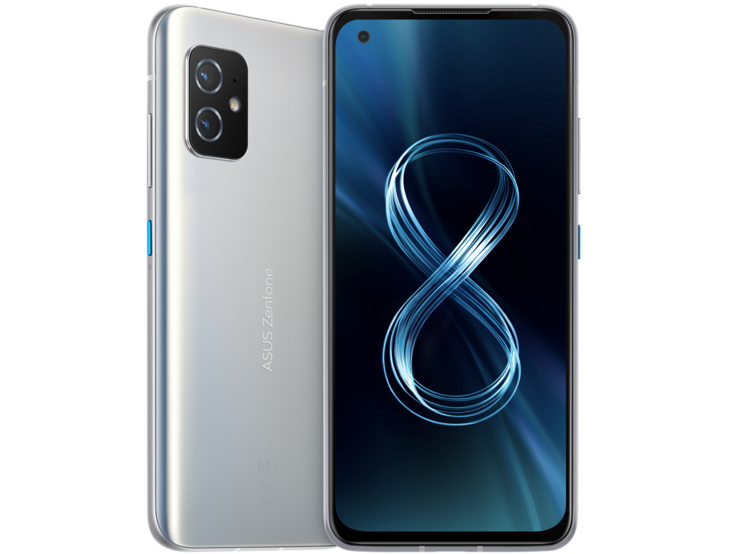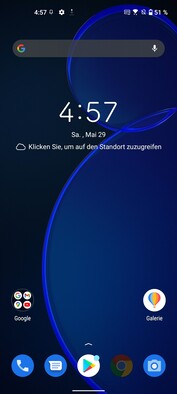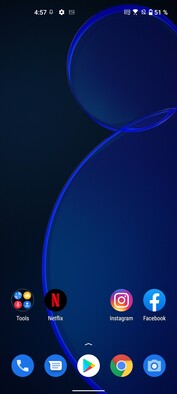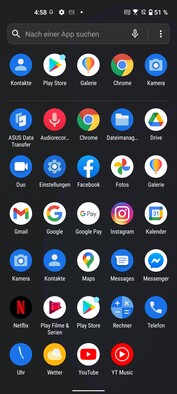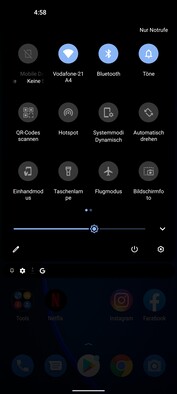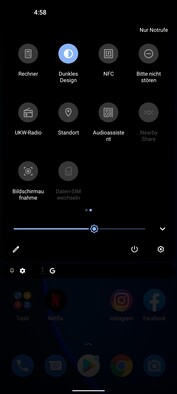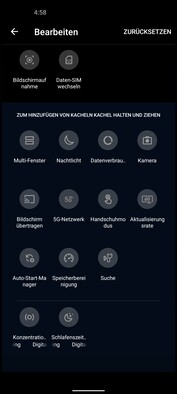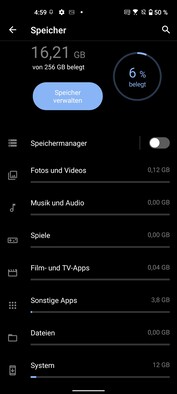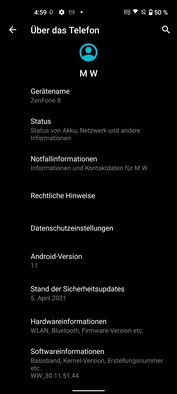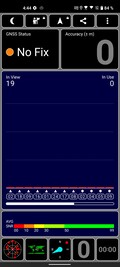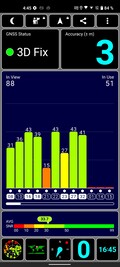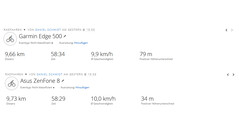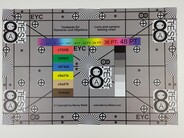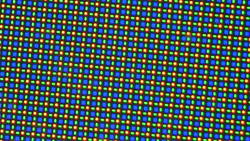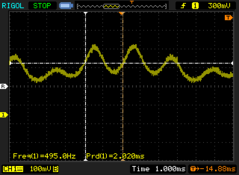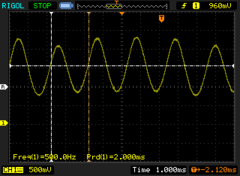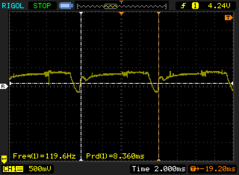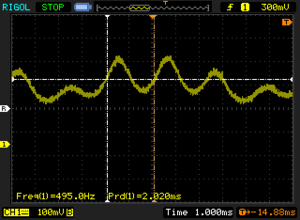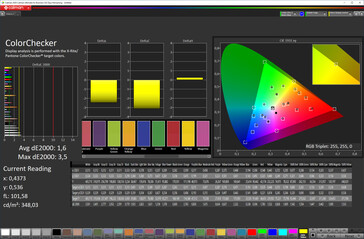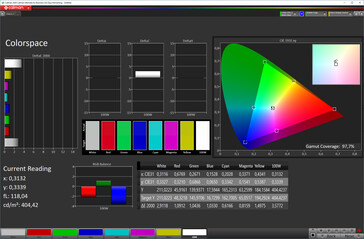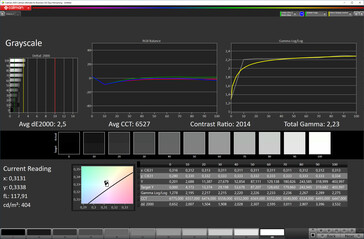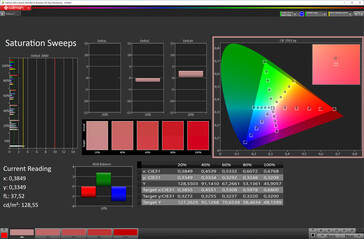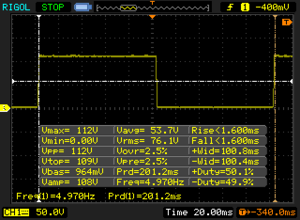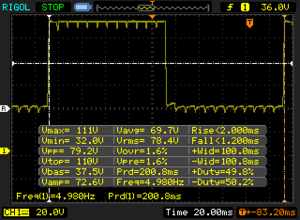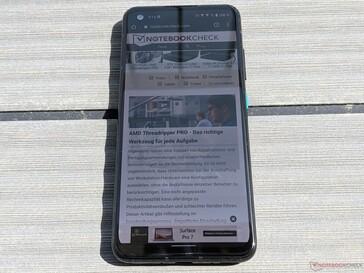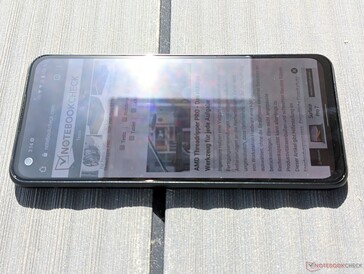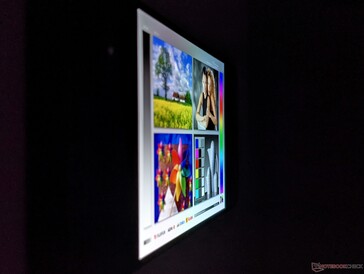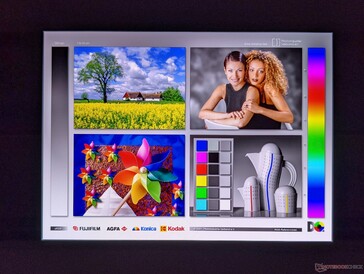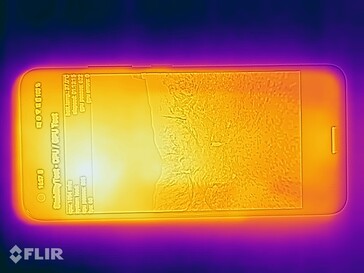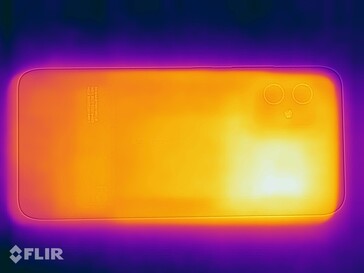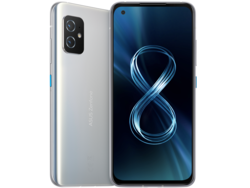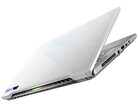Asus ZenFone 8 smartphone in review: Compact and powerful
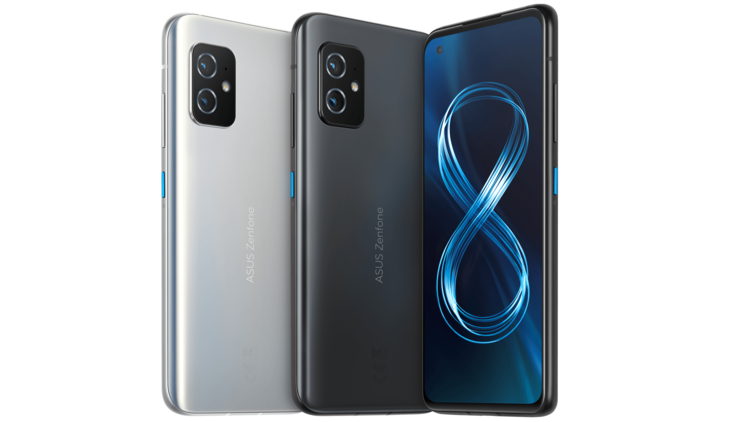
The Asus smartphones Zenfone 6 and Zenfone 7 Pro scored with a high-quality build and very good performance in our tests. Asus' Zenfone 8 wants to continue this trend and therefore relies on a high-end SoC and fast storage.
For a price of approximately 800 Euros (~$800), it will have to compete with the rivals listed below in our test. More devices from our database can be added for comparison under each section.
Possible competitors in comparison
Rating | Date | Model | Weight | Drive | Size | Resolution | Price |
|---|---|---|---|---|---|---|---|
| 85.9 % v7 (old) | 06 / 2021 | Asus ZenFone 8 SD 888 5G, Adreno 660 | 169 g | 256 GB UFS 3.1 Flash | 5.92" | 2400x1080 | |
| 84.6 % v7 (old) | 10 / 2020 | Google Pixel 5 SD 765G, Adreno 620 | 151 g | 128 GB UFS 2.1 Flash | 6.00" | 2340x1080 | |
| 87.2 % v7 (old) | 04 / 2021 | OnePlus 9 SD 888 5G, Adreno 660 | 192 g | 256 GB UFS 3.1 Flash | 6.55" | 2400x1080 | |
| 89.5 % v7 (old) | 02 / 2021 | Samsung Galaxy S21 Exynos 2100 5G, Mali-G78 MP14 | 169 g | 128 GB UFS 3.1 Flash | 6.20" | 2400x1080 | |
| 89.9 % v7 (old) | 12 / 2020 | Apple iPhone 12 mini A14, A14 Bionic GPU | 133 g | 128 GB NVMe | 5.40" | 2340x1080 |
Case - Small smartphone with IP certificate
Asus manufactures the Zenfone 8 with a metal frame and a back made of Corning Gorilla Glass 3. The display is protected by Corning Gorilla Glass Victus. There is also a choice of two colors, "Obsidian Black" and "Horizon Silver", and the casing is protected against submersion in water and dust according to IP68.
With a weight of 169 grams (~6 oz), it is not a very light device and despite the small screen size, it is not as small as the Apple iPhone 12 mini but rather resembles the Google Pixel 5.
Features - Notification LED and jack connector
Asus does without a microSD card slot in the Zenfone 8. Instead, two SIM cards can be inserted that support VoLTE and VoWLAN. The USB-C port can transfer data with the USB 2.0 standard and a 3.5 mm jack is available for wired headsets. DRM Widevine L1 is also supported and the Camera2 API is available with Level 3.
A notification LED next to the charging port also informs about system events and shows the battery's state during charging.
Software - Pure Android on the Zenfone 8
Communications and GNSS - Fast WLAN meets 5G
Besides GSM, 3G and LTE, the Zenfone 8 can also establish mobile connections in 5G networks. Added to that are NFC, Bluetooth 5.2, and WiFi 6 for short-range communication.
High speeds are achieved with our reference router Netgear Nighthawk AX12, which is sufficient for the first place in our test field.
| Networking | |
| iperf3 transmit AX12 | |
| Asus ZenFone 8 | |
| Apple iPhone 12 mini | |
| Samsung Galaxy S21 | |
| Samsung Galaxy S21 | |
| OnePlus 9 | |
| Google Pixel 5 | |
| iperf3 receive AX12 | |
| Asus ZenFone 8 | |
| Samsung Galaxy S21 | |
| Samsung Galaxy S21 | |
| OnePlus 9 | |
| Google Pixel 5 | |
| Apple iPhone 12 mini | |
Asus' smartphone can use GPS, GLONASS, BeiDou, Galileo, QZSS and NavIC to determine the location. We achieved a positioning accuracy of up to three meters (~10 feet) outdoors with the app "GPS Test".
On our obligatory bike tour, the track recorded with the Asus Zenfone 8 shows a smaller deviation than our reference device Garmin Edge 500 on long straights and curves.
Phone features and voice quality - High volume during calls
The Zenfone 8's telephony app allows direct access to recent calls and a numeric keypad. Another tab displays saved contacts. A high volume is possible during calls and background noise is reliably filtered out. Participants can also be understood clearly on both sides.
The VoLTE and VoWLAN features are also available, but no eSIM can be used. In addition, only the preferred SIM card can use 5G.
Cameras - Solid image quality
Asus equips the Zenfone 8 with a 64 MP main camera that takes close-ups with many details in the focus area. Colors look natural and our test subject is evenly lit. Panoramic pictures also show many details, but might look a bit too dark depending on the ambient light. When objects in the picture are brought closer with the software zoom, the level of detail decreases a bit, but the subject is still easily recognizable. Pictures taken in low-light conditions only show blurry details and pale colors.
A slightly better result is achieved with the night mode. Besides the main camera, the 12 MP IMX363 sensor is available for ultra-wide-angle shots, which is used in the Pixel 5 for the main camera. Colors look more vivid, but a slight graininess can be noticed on the entire picture. Various picture settings can also be adjusted manually via a Pro mode.
The front-facing camera also records pictures with 12 MP and shows many details as well as natural colors. A beautification mode can be applied in the camera app and the shutter speed can be adjusted manually. Video recordings made with the main camera offer a similar quality as shown in our test photos. An image stabilizer ensures a smooth picture and the quality can also be influenced in a professional mode. Possible resolutions are HD, FullHD with 30 and 60 fps, 4K with 30 and 60 fps, and 8K.
Image comparison
Choose a scene and navigate within the first image. One click changes the position on touchscreens. One click on the zoomed-in image opens the original in a new window. The first image shows the scaled photograph of the test device.
Close upPanoramaUltra wide angleZoom (5x)LowLightOur test image of the ColorChecker Passport shows that the camera of the Asus Zenfone 8 captures colors a bit too brightly under controlled lighting conditions. The chart displays many details, but shows a contrast weakness in the lower corners.
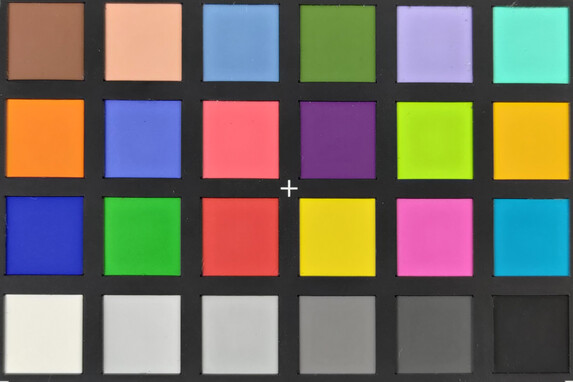
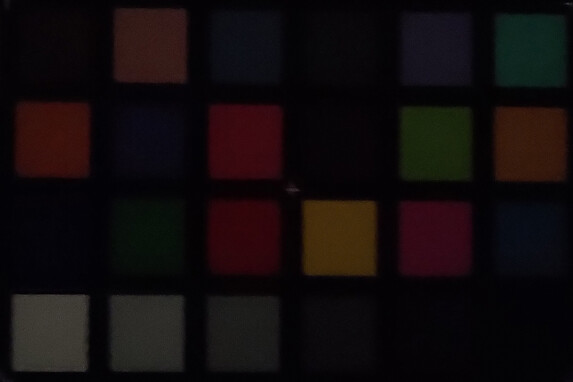
Accessories and warranty - protective case for Zenfone 8 included
The Zenfone 8 comes with a USB power adapter with a matching USB-C cable, a SIM needle, and a protective case made of rigid plastic.
Asus grants a warranty period of 24 months for the Zenfone 8.
Input Devices & Operation - Reliable InScreen Fingerprint Sensor
Google's GBoard is available for text input on the Zenfone 8. The touchscreen responds very directly to inputs and is also well suited for longer drag-and-drop movements.
An optical in-screen fingerprint sensor is also available for unlocking the smartphone, which responded very well to stored prints in our test. Face recognition can also be set up and used reliably.
Display - Bright AMOLED screen
The screen of the Asus Zenfone 8 consists of a 5.92-inch AMOLED panel and offers a resolution of 2400 x 1080 pixels. The average brightness is a maximum of 759 cd/m² and reaches 1,007 cd/m² in the APL50 test. However, only 425 cd/m² are achieved without an enabled ambient light sensor.
For brightness levels below 45 percent we measure PWM in a frequency range between 160.8 and 459 Hz. From 27 to 64 percent, the frequency range narrows to 454.2 to 520.8 Hz. Above 64 percent, we only notice the refresh rate of 120 Hz. There is an entry "DC dimming" in the display menu, but it has no function.
| |||||||||||||||||||||||||
Brightness Distribution: 98 %
Center on Battery: 758 cd/m²
Contrast: ∞:1 (Black: 0 cd/m²)
ΔE ColorChecker Calman: 3.5 | ∀{0.5-29.43 Ø4.78}
ΔE Greyscale Calman: 1.6 | ∀{0.09-98 Ø5}
99.9% sRGB (Calman 2D)
Gamma: 2.23
CCT: 6527 K
| Asus ZenFone 8 AMOLED, 2400x1080, 5.9" | Google Pixel 5 OLED, 2340x1080, 6" | OnePlus 9 AMOLED, 2400x1080, 6.6" | Samsung Galaxy S21 Dynamic AMOLED 2X, 2400x1080, 6.2" | Apple iPhone 12 mini OLED, 2340x1080, 5.4" | |
|---|---|---|---|---|---|
| Screen | 8% | 24% | 9% | 11% | |
| Brightness middle (cd/m²) | 758 | 635 -16% | 731 -4% | 790 4% | 623 -18% |
| Brightness (cd/m²) | 759 | 636 -16% | 739 -3% | 793 4% | 623 -18% |
| Brightness Distribution (%) | 98 | 97 -1% | 96 -2% | 97 -1% | 98 0% |
| Black Level * (cd/m²) | |||||
| Colorchecker dE 2000 * | 3.5 | 0.8 77% | 0.59 83% | 2.2 37% | 1 71% |
| Greyscale dE 2000 * | 1.6 | 1.7 -6% | 0.9 44% | 1.6 -0% | 1.3 19% |
| Gamma | 2.23 99% | 2.23 99% | 2.243 98% | 2.13 103% | 2.21 100% |
| CCT | 6527 100% | 6492 100% | 6573 99% | 6497 100% | 6258 104% |
| Colorchecker dE 2000 max. * | 2.2 | 1.3 | 4.2 | 2.1 |
* ... smaller is better
Screen Flickering / PWM (Pulse-Width Modulation)
| Screen flickering / PWM detected | 495 Hz | ≤ 45 % brightness setting | |
The display backlight flickers at 495 Hz (worst case, e.g., utilizing PWM) Flickering detected at a brightness setting of 45 % and below. There should be no flickering or PWM above this brightness setting. The frequency of 495 Hz is relatively high, so most users sensitive to PWM should not notice any flickering. However, there are reports that some users are still sensitive to PWM at 500 Hz and above, so be aware. In comparison: 53 % of all tested devices do not use PWM to dim the display. If PWM was detected, an average of 8108 (minimum: 5 - maximum: 343500) Hz was measured. | |||
Besides the excellent contrast ratio of an OLED panel and the associated black value of 0 cd/m², the Zenfone 8 also displays colors with an extremely low deviation with the preloaded profile "Cinema".
In the settings menu, the color temperature can be adjusted manually with other pre-made profiles or a slider.
Display Response Times
| ↔ Response Time Black to White | ||
|---|---|---|
| 3.2 ms ... rise ↗ and fall ↘ combined | ↗ 1.6 ms rise | |
| ↘ 1.6 ms fall | ||
| The screen shows very fast response rates in our tests and should be very well suited for fast-paced gaming. In comparison, all tested devices range from 0.1 (minimum) to 240 (maximum) ms. » 13 % of all devices are better. This means that the measured response time is better than the average of all tested devices (20.2 ms). | ||
| ↔ Response Time 50% Grey to 80% Grey | ||
| 3.2 ms ... rise ↗ and fall ↘ combined | ↗ 2 ms rise | |
| ↘ 1.2 ms fall | ||
| The screen shows very fast response rates in our tests and should be very well suited for fast-paced gaming. In comparison, all tested devices range from 0.165 (minimum) to 636 (maximum) ms. » 12 % of all devices are better. This means that the measured response time is better than the average of all tested devices (31.6 ms). | ||
Performance - Good performance and fast memory
The Asus Zenfone 8 shows a very good performance in our benchmarks. Results that affect the system performance are mostly slightly below the Samsung Galaxy S21 and slightly above the OnePlus 9. However, in graphics-heavy tests, the Apple iPhone 12 mini places itself ahead of our test device.
In the GFXBench, the achieved rates are lower than those of other smartphones with a Qualcomm Snapdragon 888 5G which can probably be attributed to cooling problems.
| PCMark for Android - Work 3.0 (sort by value) | |
| Asus ZenFone 8 | |
| Average Qualcomm Snapdragon 888 5G (11435 - 17085, n=21) | |
| Average of class Smartphone (4507 - 28557, n=186, last 2 years) | |
| GFXBench 3.1 | |
| on screen Manhattan ES 3.1 Onscreen (sort by value) | |
| Asus ZenFone 8 | |
| Google Pixel 5 | |
| OnePlus 9 | |
| Samsung Galaxy S21 | |
| Apple iPhone 12 mini | |
| Average Qualcomm Snapdragon 888 5G (36 - 105, n=20) | |
| Average of class Smartphone (11 - 166, n=157, last 2 years) | |
| 1920x1080 Manhattan ES 3.1 Offscreen (sort by value) | |
| Asus ZenFone 8 | |
| Google Pixel 5 | |
| OnePlus 9 | |
| Samsung Galaxy S21 | |
| Apple iPhone 12 mini | |
| Average Qualcomm Snapdragon 888 5G (69 - 126, n=20) | |
| Average of class Smartphone (8.4 - 413, n=156, last 2 years) | |
| Antutu v9 - Total Score (sort by value) | |
| Asus ZenFone 8 | |
| Apple iPhone 12 mini | |
| Average Qualcomm Snapdragon 888 5G (636471 - 824694, n=17) | |
| Average of class Smartphone (99654 - 2056989, n=26, last 2 years) | |
In the browser benchmarks, the Zenfone 8 is only beaten by the Apple iPhone 12 mini in our test field. The achieved rates are nevertheless very good and can be seen by smoothly scrolling websites and fast availability of media content in everyday use.
| JetStream 1.1 - Total Score | |
| Apple iPhone 12 mini (Safari Mobile 14) | |
| Asus ZenFone 8 (Chrome 90) | |
| Average Qualcomm Snapdragon 888 5G (77 - 223, n=19) | |
| OnePlus 9 (MS Edge) | |
| Samsung Galaxy S21 (Chrome 88.0.4324.152) | |
| Google Pixel 5 (Chrome 86.0.4240.110) | |
| WebXPRT 3 - Overall | |
| Apple iPhone 12 mini (Safari Mobile 14) | |
| Average of class Smartphone (38 - 380, n=31, last 2 years) | |
| Asus ZenFone 8 (Chrome 90) | |
| Average Qualcomm Snapdragon 888 5G (103 - 182, n=18) | |
| OnePlus 9 (MS Edge) | |
| Samsung Galaxy S21 (Chrome 88.0.4324.152) | |
| Google Pixel 5 (Chrome 86.0.4240.110) | |
| Octane V2 - Total Score | |
| Apple iPhone 12 mini (Safari Mobile 14) | |
| Average of class Smartphone (2228 - 121337, n=197, last 2 years) | |
| Asus ZenFone 8 (Chrome 90) | |
| Average Qualcomm Snapdragon 888 5G (23491 - 47543, n=20) | |
| Samsung Galaxy S21 (Chrome 88.0.4324.152) | |
| OnePlus 9 (Chrome89) | |
| Google Pixel 5 (Chrome 86.0.4240.110) | |
| Mozilla Kraken 1.1 - Total | |
| Google Pixel 5 (Chrome 86.0.4240.110) | |
| Samsung Galaxy S21 (Chrome 88.0.4324.152) | |
| OnePlus 9 (Chrome89) | |
| Asus ZenFone 8 (Chrome 90) | |
| Average Qualcomm Snapdragon 888 5G (891 - 1841, n=20) | |
| Average of class Smartphone (257 - 28190, n=154, last 2 years) | |
| Apple iPhone 12 mini (Safari Mobile 14) | |
* ... smaller is better
The UFS 3.1 storage installed in the Zenfone 8 offers 256 GB and achieves very good results in the storage benchmark. Thus, Asus' smartphone can lead our test field.
| Asus ZenFone 8 | Google Pixel 5 | OnePlus 9 | Samsung Galaxy S21 | Average 256 GB UFS 3.1 Flash | Average of class Smartphone | |
|---|---|---|---|---|---|---|
| AndroBench 3-5 | -56% | -10% | 12% | 18% | 48% | |
| Sequential Read 256KB (MB/s) | 1781 | 851 -52% | 1872 5% | 1648 -7% | 1757 ? -1% | 2228 ? 25% |
| Sequential Write 256KB (MB/s) | 767 | 190 -75% | 739 -4% | 1095 43% | 1204 ? 57% | 1852 ? 141% |
| Random Read 4KB (MB/s) | 292.3 | 138.9 -52% | 225.4 -23% | 309.7 6% | 287 ? -2% | 296 ? 1% |
| Random Write 4KB (MB/s) | 272.9 | 155.9 -43% | 221.4 -19% | 282.6 4% | 318 ? 17% | 339 ? 24% |
Games - Smooth gaming possible without problems
The graphics unit Qualcomm Adreno 660 of the Zenfone 8 is well suited to run current games on smartphones with high detail levels. The titles we tested ran smoothly at all times and did not show any micro-stutters or the like.
Emissions - loud speakers in the Asus Zenfone 8
Temperature
According to our measurements, the Zenfone 8 heats up to 40.2 °C (104.36 °F) under load. The performance remains relatively stable even over a long period, which means that restrictions due to high temperatures are not to be expected.
| 3DMark | |
| Wild Life Stress Test Stability | |
| Asus ZenFone 8 | |
| Wild Life Extreme Stress Test | |
| Asus ZenFone 8 | |
(±) The maximum temperature on the upper side is 40.2 °C / 104 F, compared to the average of 35.2 °C / 95 F, ranging from 21.9 to 247 °C for the class Smartphone.
(+) The bottom heats up to a maximum of 38.7 °C / 102 F, compared to the average of 34 °C / 93 F
(+) In idle usage, the average temperature for the upper side is 29.2 °C / 85 F, compared to the device average of 32.9 °C / 91 F.
Speaker
The dual speakers of Asus' smartphone achieve a relatively high volume and offer quite a wide sound spectrum. Thus, they are also suitable for consuming media content. However, headphones or external speakers are still recommended for music and in loud environments.
Asus also installs a 3.5 mm jack, which is very high-quality with an SNR value (signal-to-noise ratio) of 103.48 dBFS.
Asus ZenFone 8 audio analysis
(+) | speakers can play relatively loud (86.7 dB)
Bass 100 - 315 Hz
(-) | nearly no bass - on average 20.9% lower than median
(±) | linearity of bass is average (13.6% delta to prev. frequency)
Mids 400 - 2000 Hz
(+) | balanced mids - only 4.4% away from median
(+) | mids are linear (3.8% delta to prev. frequency)
Highs 2 - 16 kHz
(+) | balanced highs - only 3.7% away from median
(+) | highs are linear (2.7% delta to prev. frequency)
Overall 100 - 16.000 Hz
(+) | overall sound is linear (14.5% difference to median)
Compared to same class
» 1% of all tested devices in this class were better, 2% similar, 97% worse
» The best had a delta of 11%, average was 35%, worst was 134%
Compared to all devices tested
» 18% of all tested devices were better, 4% similar, 78% worse
» The best had a delta of 4%, average was 24%, worst was 134%
OnePlus 9 audio analysis
(+) | speakers can play relatively loud (83 dB)
Bass 100 - 315 Hz
(-) | nearly no bass - on average 68.3% lower than median
(+) | bass is linear (0% delta to prev. frequency)
Mids 400 - 2000 Hz
(-) | nearly no mids - on average 68.3% lower than median
(+) | mids are linear (0% delta to prev. frequency)
Highs 2 - 16 kHz
(-) | nearly no highs - on average 68.3% lower than median
(+) | highs are linear (0% delta to prev. frequency)
Overall 100 - 16.000 Hz
(-) | overall sound is not linear (117.1% difference to median)
Compared to same class
» 87% of all tested devices in this class were better, 6% similar, 6% worse
» The best had a delta of 11%, average was 35%, worst was 134%
Compared to all devices tested
» 96% of all tested devices were better, 2% similar, 2% worse
» The best had a delta of 4%, average was 24%, worst was 134%
Battery life - 120 Hz display lowers endurance
Energy consumption
According to our measurements, the power consumption of the Asus Zenfone 8 is in the middle of our chosen test devices. Nevertheless, it is a frugal smartphone and shows a lower power requirement than other comparable smartphones.
The included charger offers an output power of 30 watts.
| Off / Standby | |
| Idle | |
| Load |
|
Key:
min: | |
| Asus ZenFone 8 4000 mAh | Google Pixel 5 4080 mAh | OnePlus 9 4500 mAh | Samsung Galaxy S21 4000 mAh | Apple iPhone 12 mini 2226 mAh | Average Qualcomm Snapdragon 888 5G | Average of class Smartphone | |
|---|---|---|---|---|---|---|---|
| Power Consumption | 28% | -58% | -47% | 16% | -39% | -41% | |
| Idle Minimum * (Watt) | 0.82 | 0.69 16% | 0.9 -10% | 1.1 -34% | 0.62 24% | 1.066 ? -30% | 0.842 ? -3% |
| Idle Average * (Watt) | 1.1 | 0.82 25% | 1.7 -55% | 1.61 -46% | 1.18 -7% | 1.58 ? -44% | 1.439 ? -31% |
| Idle Maximum * (Watt) | 1.16 | 0.85 27% | 2.7 -133% | 1.78 -53% | 1.21 -4% | 1.733 ? -49% | 1.624 ? -40% |
| Load Average * (Watt) | 4.24 | 2.73 36% | 5.4 -27% | 6.47 -53% | 2.1 50% | 5.46 ? -29% | 7.03 ? -66% |
| Load Maximum * (Watt) | 6.83 | 4.4 36% | 11.1 -63% | 10.12 -48% | 5.71 16% | 9.79 ? -43% | 11.3 ? -65% |
* ... smaller is better
Battery life
Asus' smartphone achieves a runtime of 7 hours and 22 minutes in our practical Wi-Fi test. Thus, it does not last as long as the rest of our test field despite a 4,000 mAh battery. However, a better runtime can be achieved with a dynamic setting of the refresh rate by the system or a fixed value of 90 or 60 instead of 120 Hz.
The smartphone is fully recharged after about one and a half hours with the included charger.
| Asus ZenFone 8 4000 mAh | Google Pixel 5 4080 mAh | OnePlus 9 4500 mAh | Samsung Galaxy S21 4000 mAh | Apple iPhone 12 mini 2226 mAh | |
|---|---|---|---|---|---|
| Battery runtime | |||||
| WiFi v1.3 (h) | 7.4 | 13.5 82% | 14.2 92% | 9.1 23% | 10.9 47% |
Pros
Cons
Verdict - A lot of performance in a compact format
Asus delivers a very compact and high-quality smartphone with the Zenfone 8. The system performance is very good, which is also reflected in a very smooth operation in everyday use. Besides very fast Wi-Fi and a bright AMOLED display, the new 5G mobile standard is also supported.
The 256 GB storage in our test configuration can also leave the competition behind, whereas the OnePlus 9 and the Google Pixel 5 are also well positioned. If you want an even smaller device with similar performance, it is also worthwhile to go for the Apple iPhone 12 mini.
The Asus Zenfone 8 offers a lot of performance in a high-quality and compact casing.
Even in the 128 GB version of the Zenfone 8, the missing microSD card reader should not be a big annoyance. However, the missing DC dimming button in the settings menu will definitely be a criterion for exclusion for sensitive users. The battery runtime is also quite low with an activated 120 Hz refresh rate. However, a significant improvement can still be achieved here with a dynamic setting.
Price and availability
The Asus Zenfone 8 is available now, for example, on Amazon with 8 GB RAM and 128 GB storage for 669 Euro, 8 GB RAM and 256 GB storage for 729 Euro and 16 GB RAM and 256 GB storage for 799 Euros (~$813, $887 and $972 respectively).
Asus ZenFone 8
- 08/31/2022 v7 (old)
Mike Wobker




